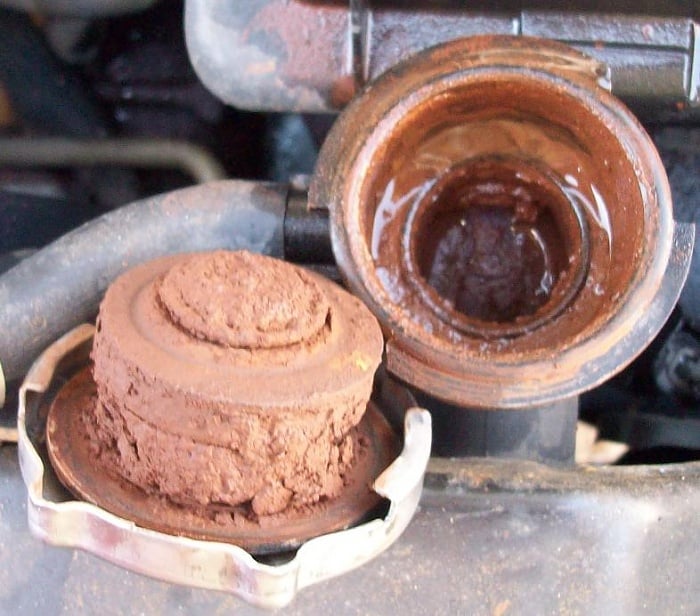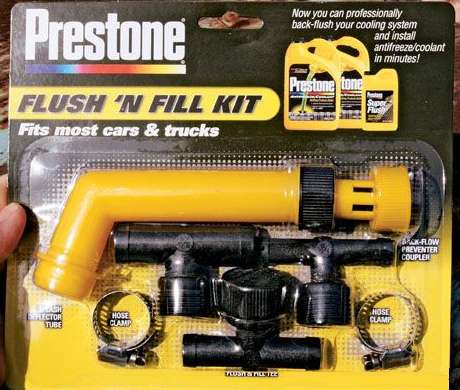Flushing Your Cooling System
Proper maintenance of your cooling system is to flush and bleed the system on a regular basis. This might be once a year or once every few years depending on where you live and how many miles you put on the car. It’s cheap to do and a good way to ensure the cooling system is operating properly. When you see deposits of rust and crud in the cooling system, it’s what engineers call “heat exchanger fouling.” It’s a build-up of junk that reduces the cooling efficiency of the radiator and the entire cooling system.

There are several ways to flush a cooling system. There are kits that allow you to run fresh water through the system, using a “T” that goes into the heater hoses. These work by running clean water through the entire system while the cap is off the radiator allowing everything to flow out.

If you want to go more old school, there are a few ways you can do it. The first is to simply unhook the lower radiator hose from the radiator and let everything drain out, then reconnect and fill with fresh water and radiator fluid. However, this won’t get everything out, especially if it’s really dirty.
If the water is really dirty, reconnect the radiator hose, fill it with clean water only, and start the engine up till it reaches operating temperature. This will cycle the freshwater with the old that’s still in the block. Then once things cool down, remove the lower radiator hose and drain again. This process takes a few times until the water will stay clean and not need to be flushed again.
There are cooling system cleaners that can help as well. These are products you can find at your local auto parts store. With these, you dump them into the cooling system, get it to operating temperature, then flush. They can help if it’s an especially dirty or neglected cooling system.

Once you have clean water running through the system it’s important to dump that out, add in at least a gallon of antifreeze, then refill. But once you’ve done that, you want to make sure to get all the air out of the system.
Bleeding The Cooling System
Any air or air pockets in the system mean that coolant can’t cool that spot. If it’s severe enough, this can cause overheating. Some engines do a great job of burping air out of the system by themselves. Others are a little more complex.

For most engines, the easiest way is to ensure the radiator is completely full of water and coolant. Then you take the radiator cap off and start the engine. Letting it idle you want it to get to operating temperature until the thermostat opens. Once it does the water and coolant generally jump down and you can top it off before reinstalling the radiator cap.
Some modern engines have a bleeder screw that’s by the thermostat housing. This allows you to crack the bleeder and remove any air. Remember though this has to be done while the engine is running and warm, so use extreme caution when doing so.

One engine that can be a little funky to fill and bleed is the popular LS engine. Here’s the pro way to do it – remove the upper radiator hose and fill the system through that upper hose. This will allow coolant to get into the entire engine block. Then simply connect the hose and run the engine with the cap off like we showed you above.
If you’re flushing and bleeding the system, it’s generally a good idea to pop in a new thermostat while you’re at it. We have a full line of performance thermostats and thermostat housings if you need them. For any questions feel free to give our friendly techs a call at (203) 235-1200




